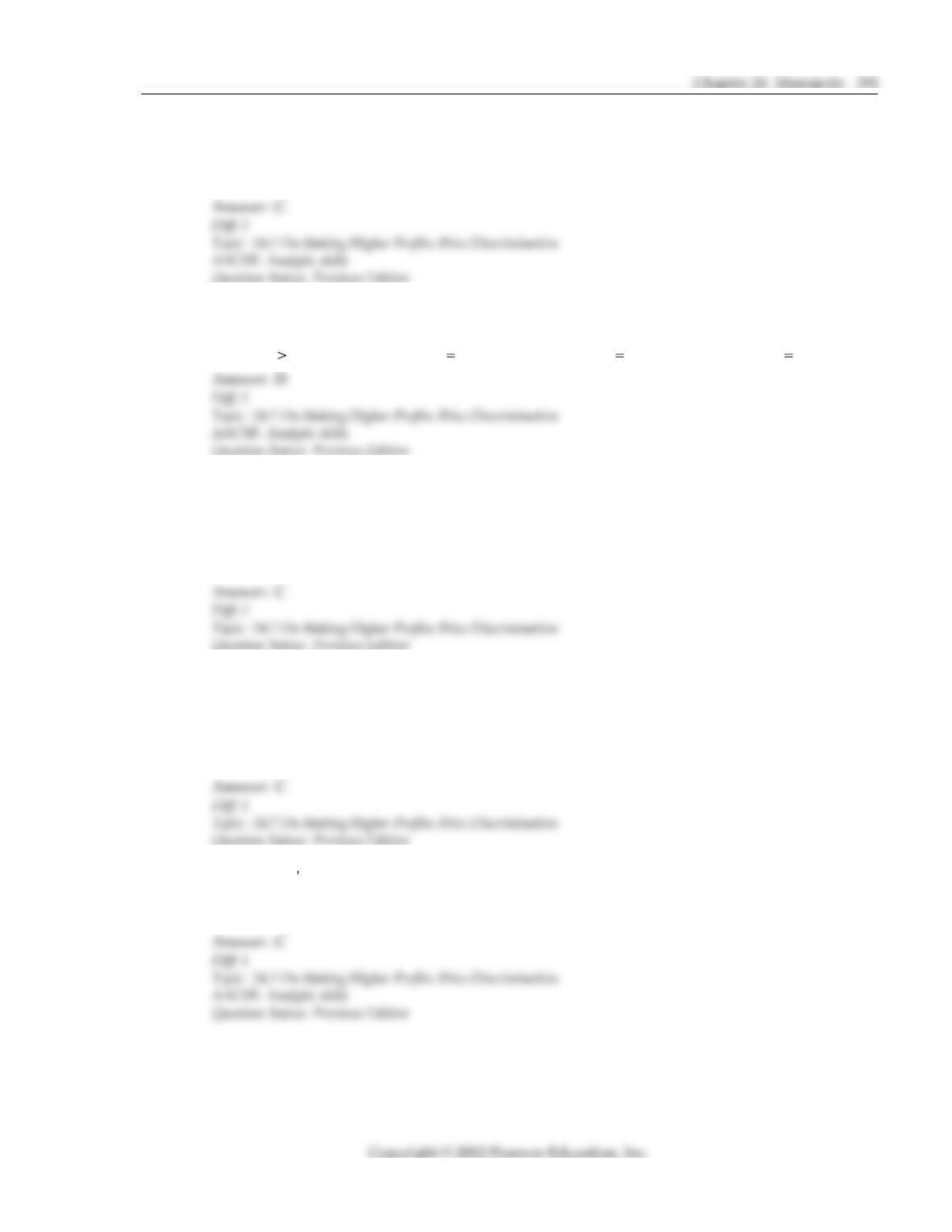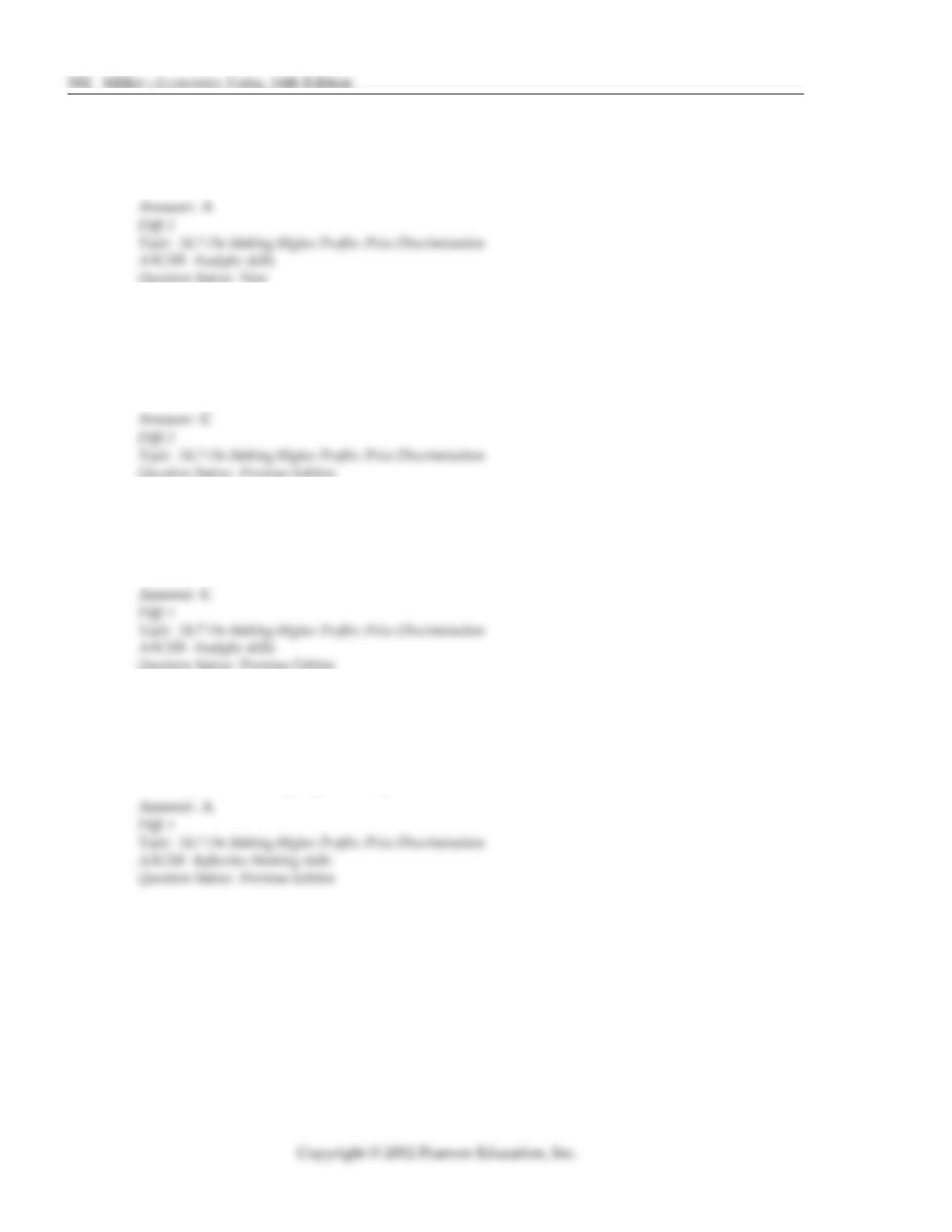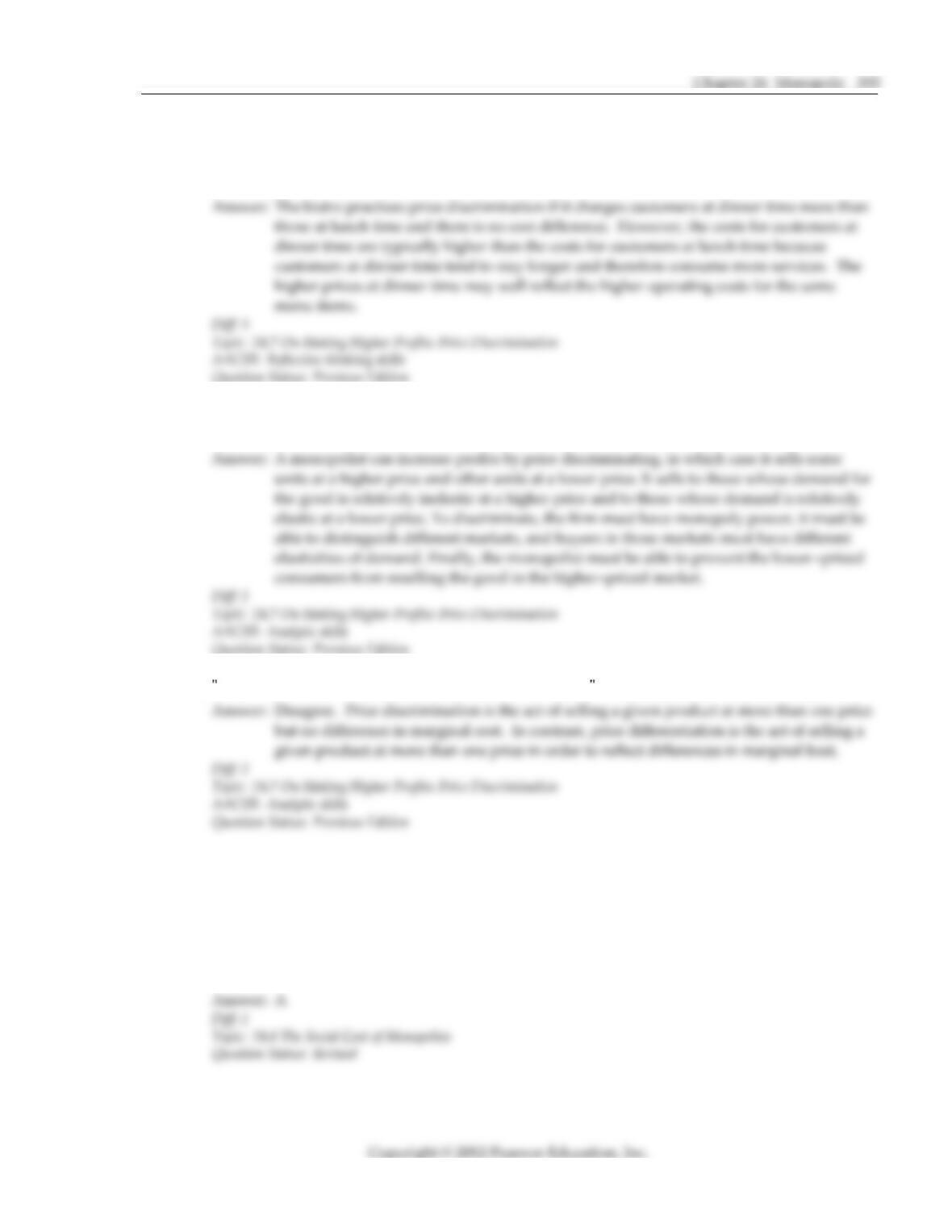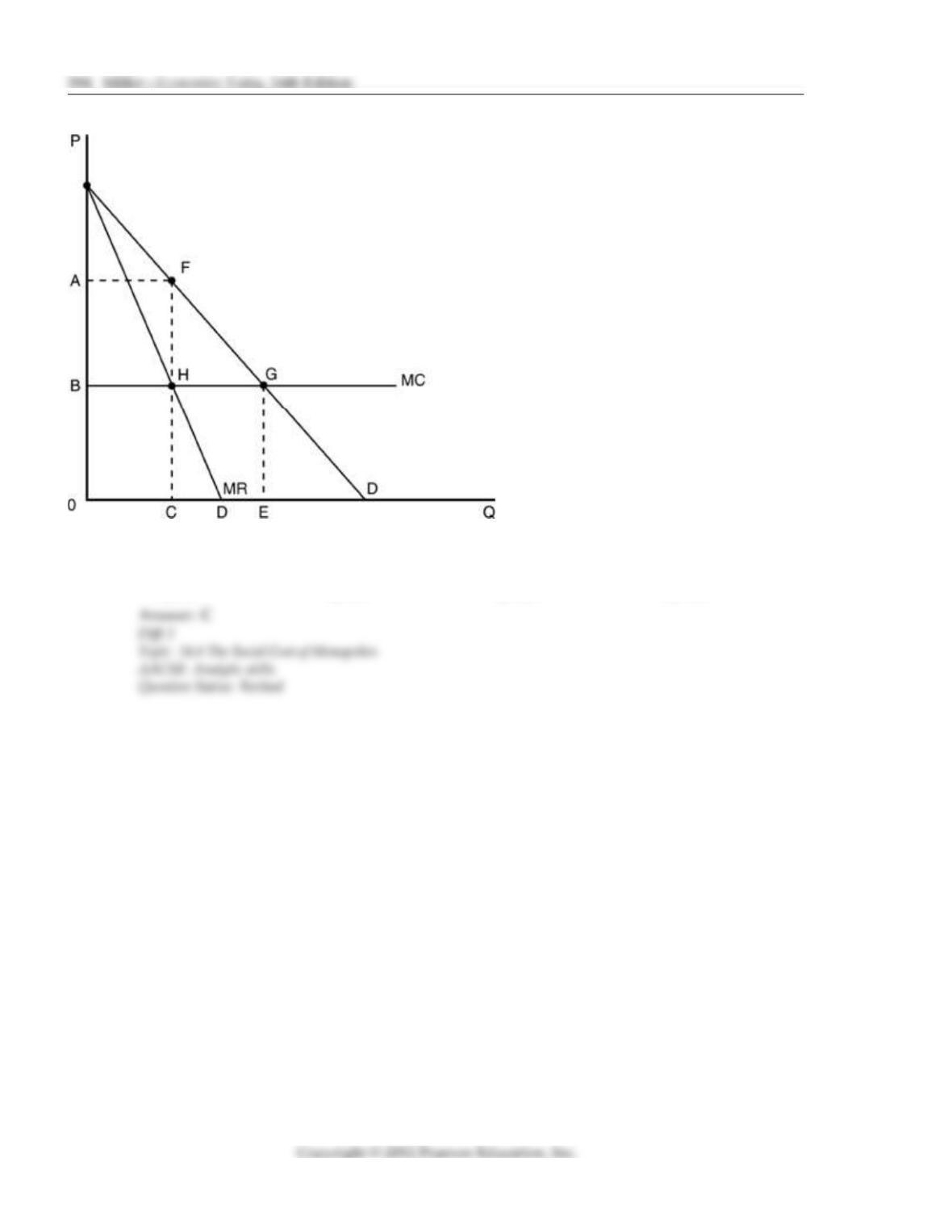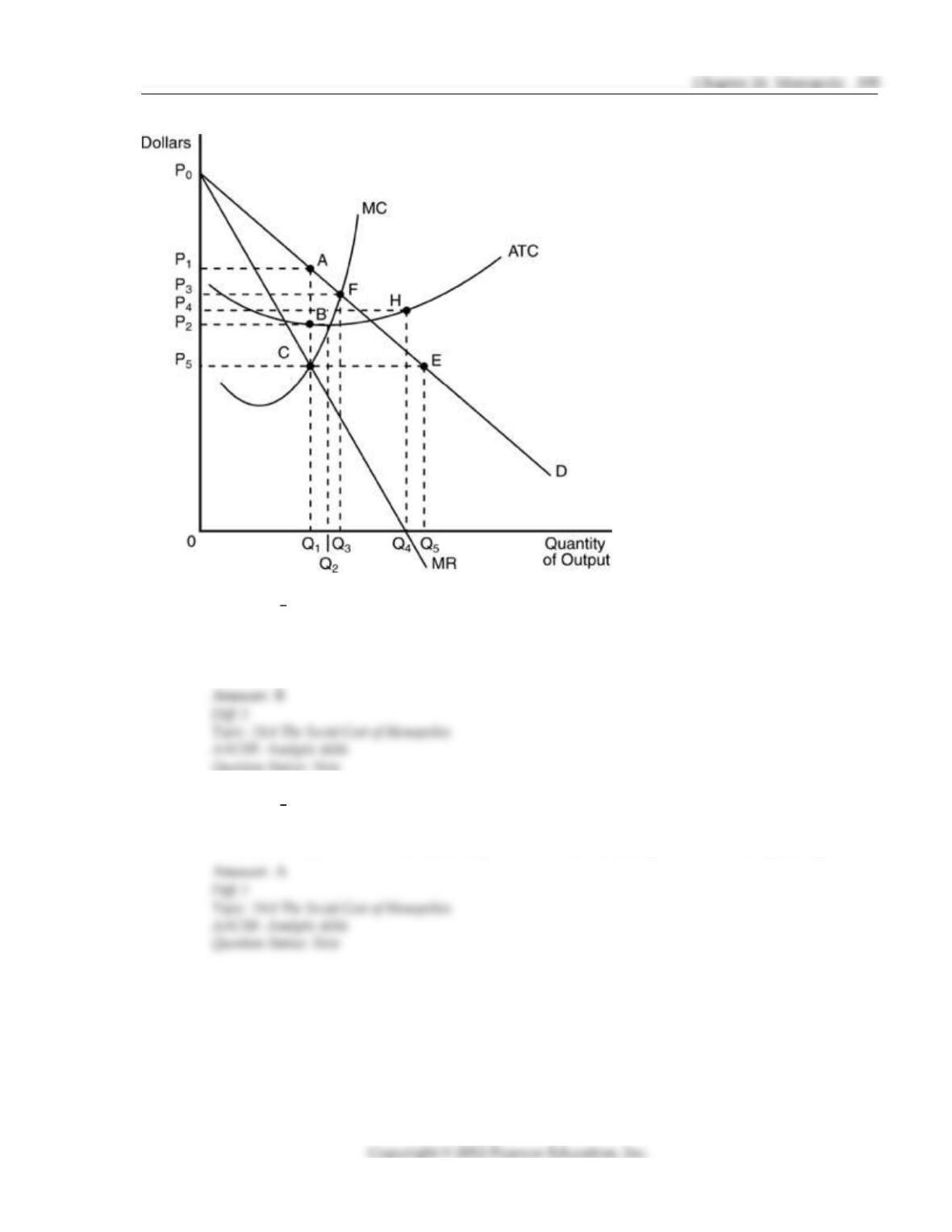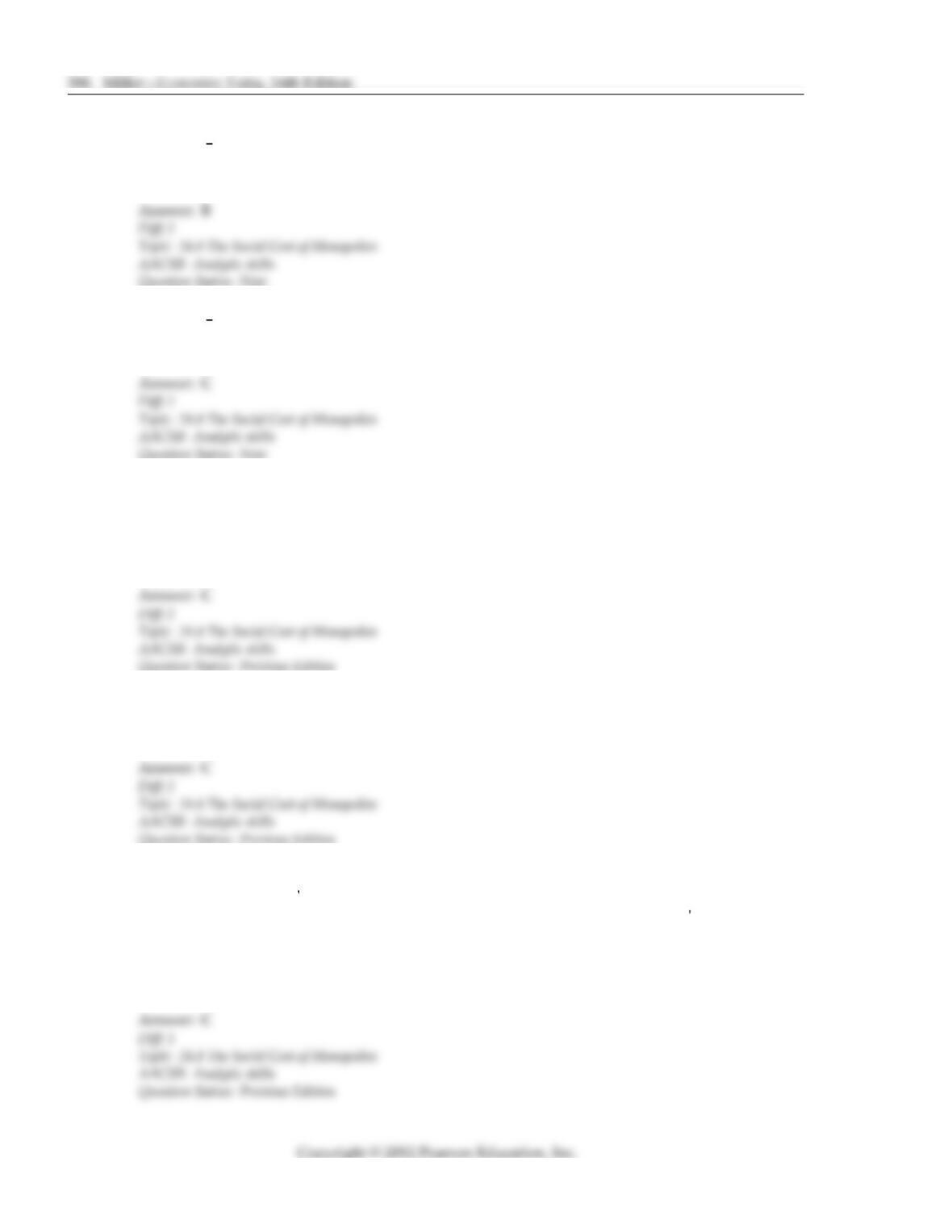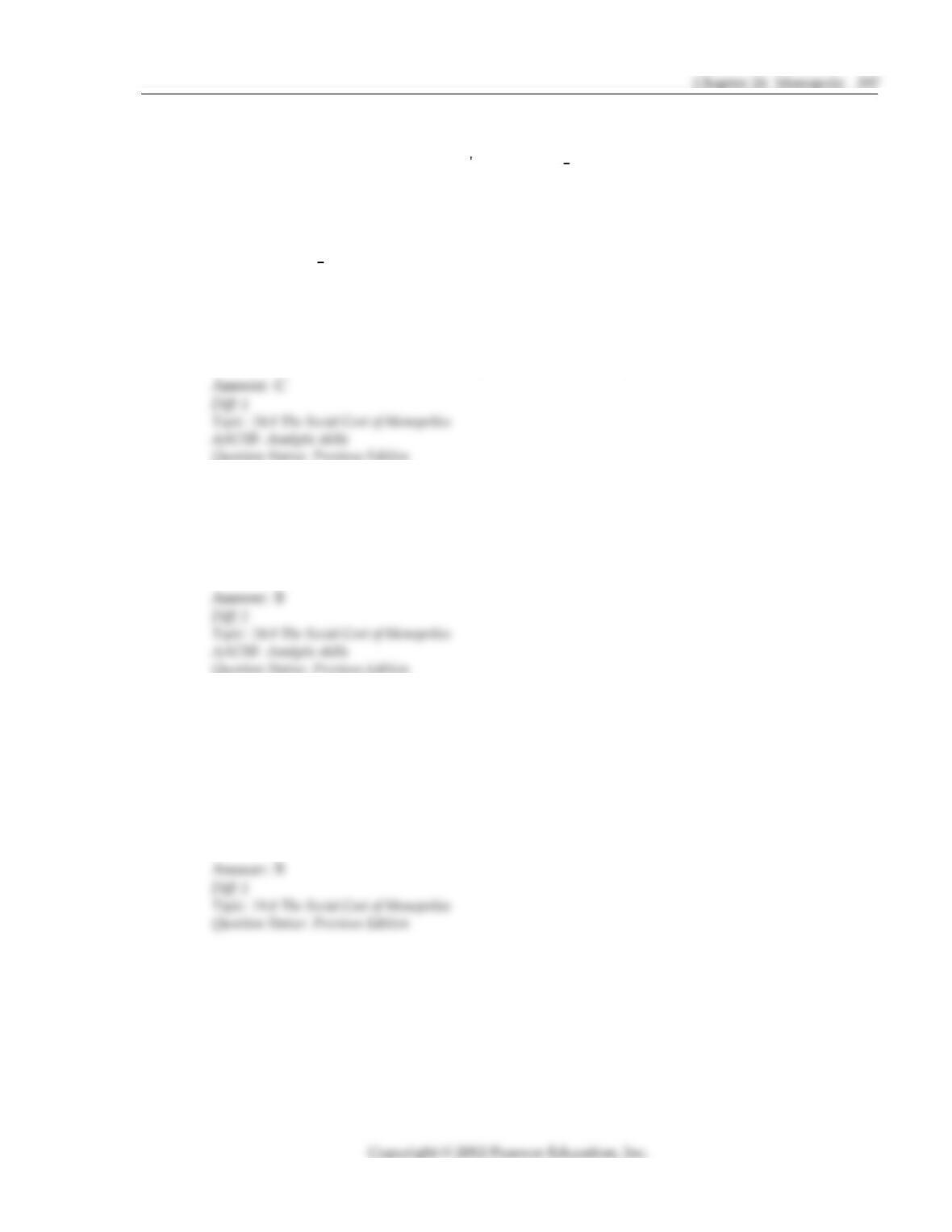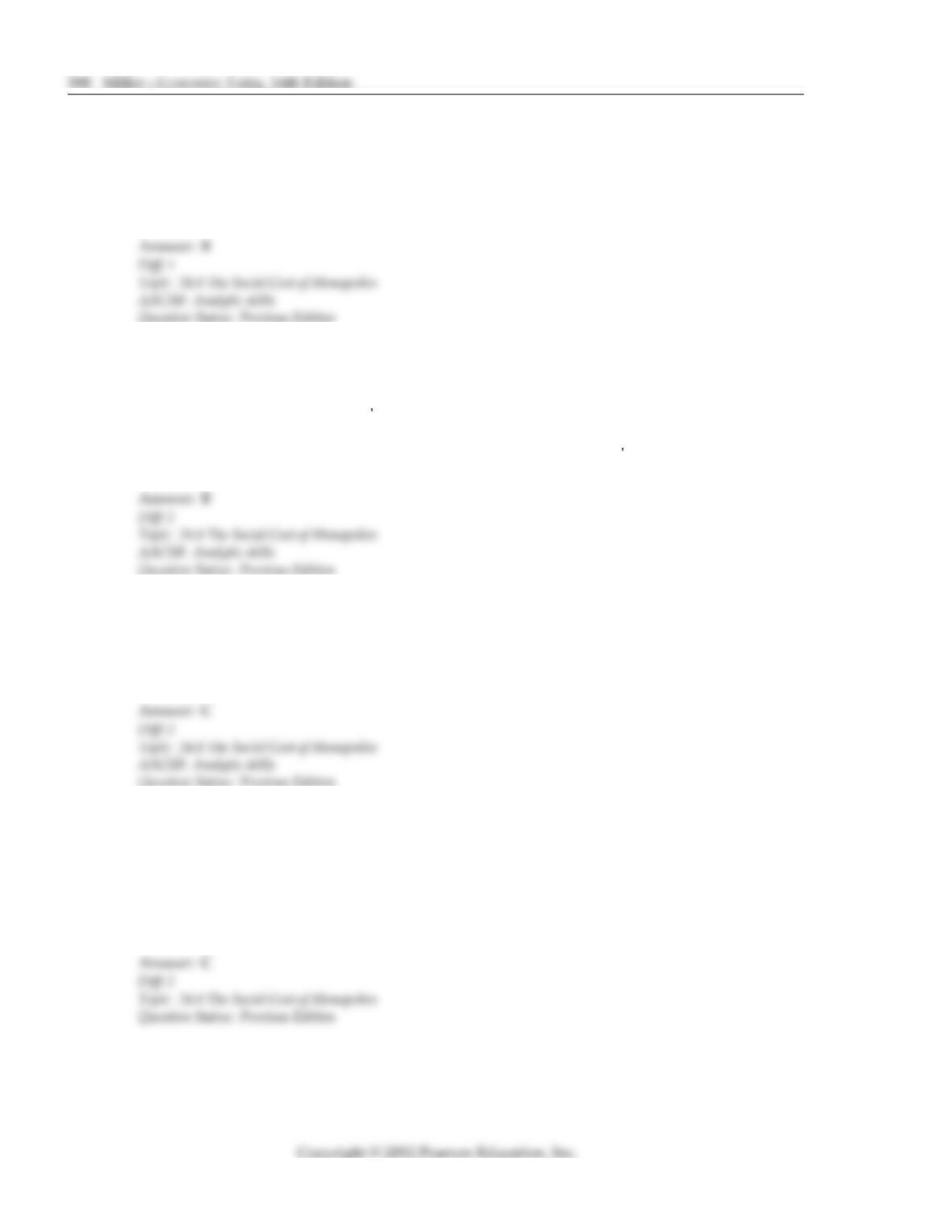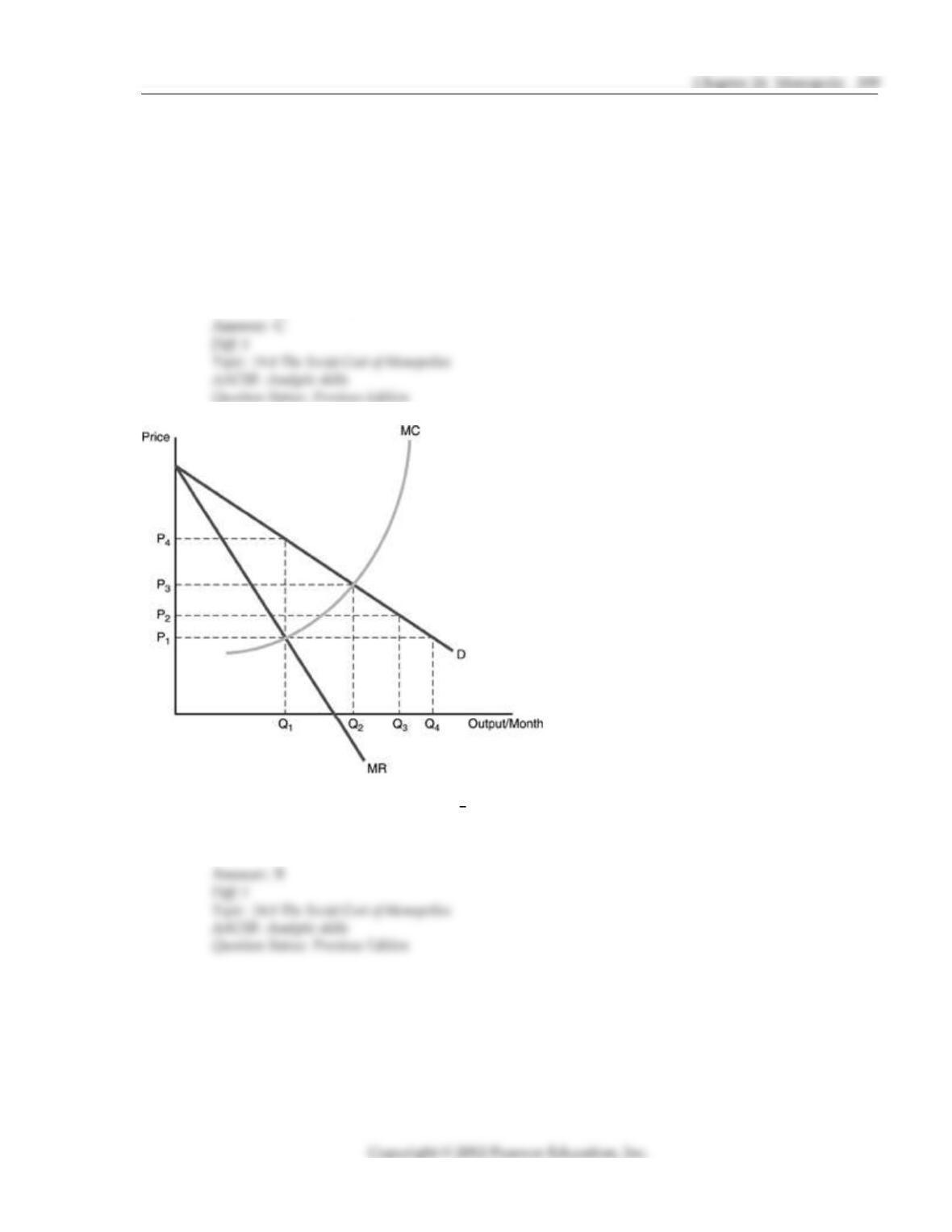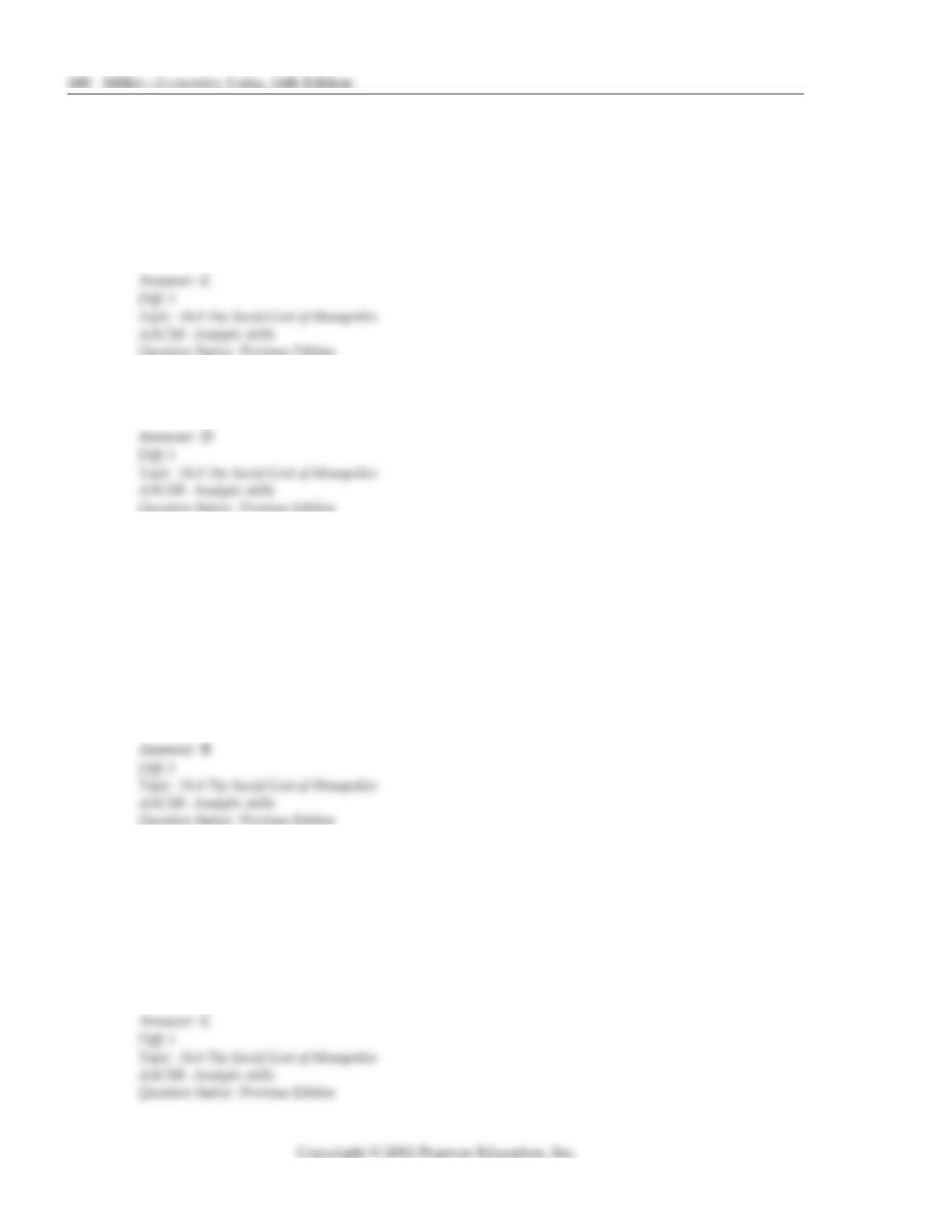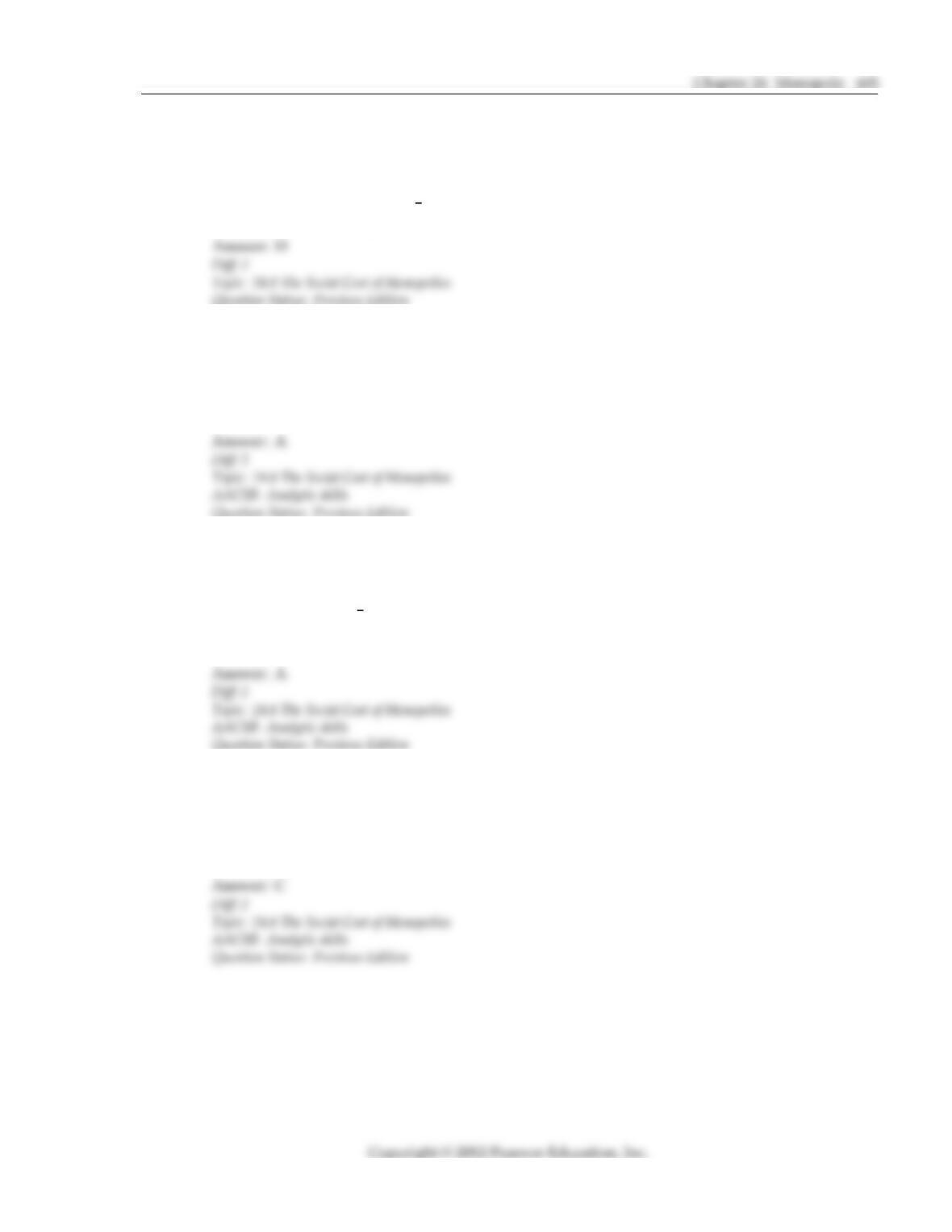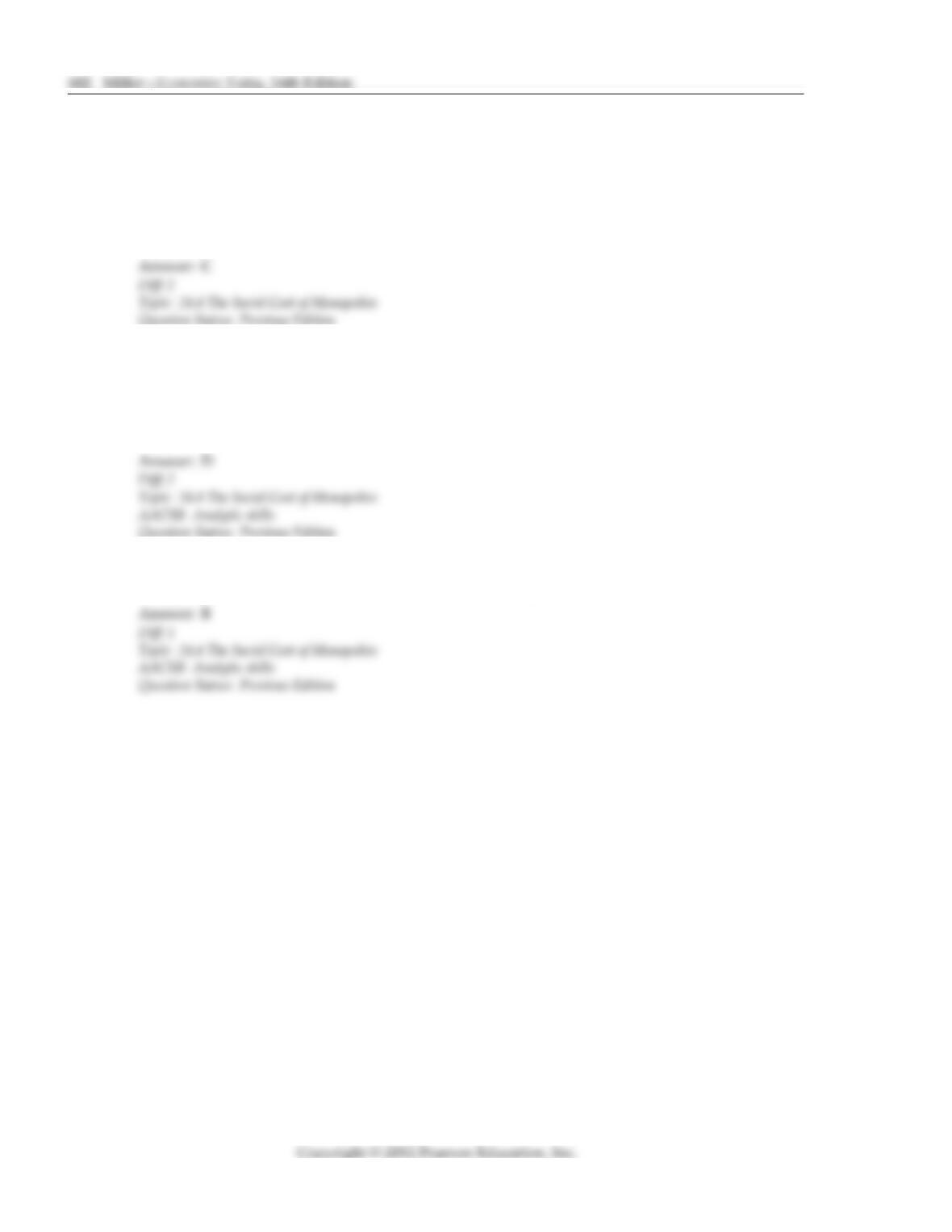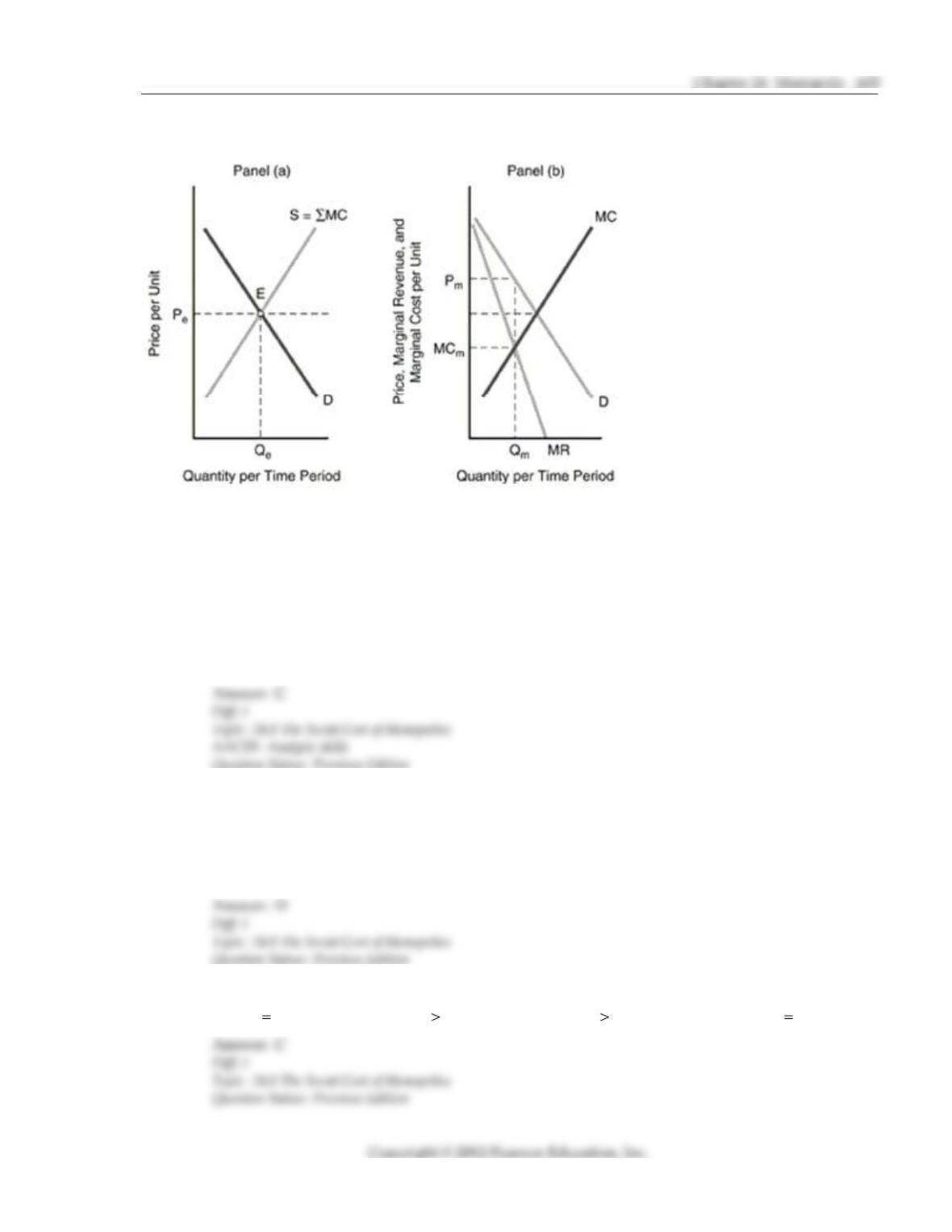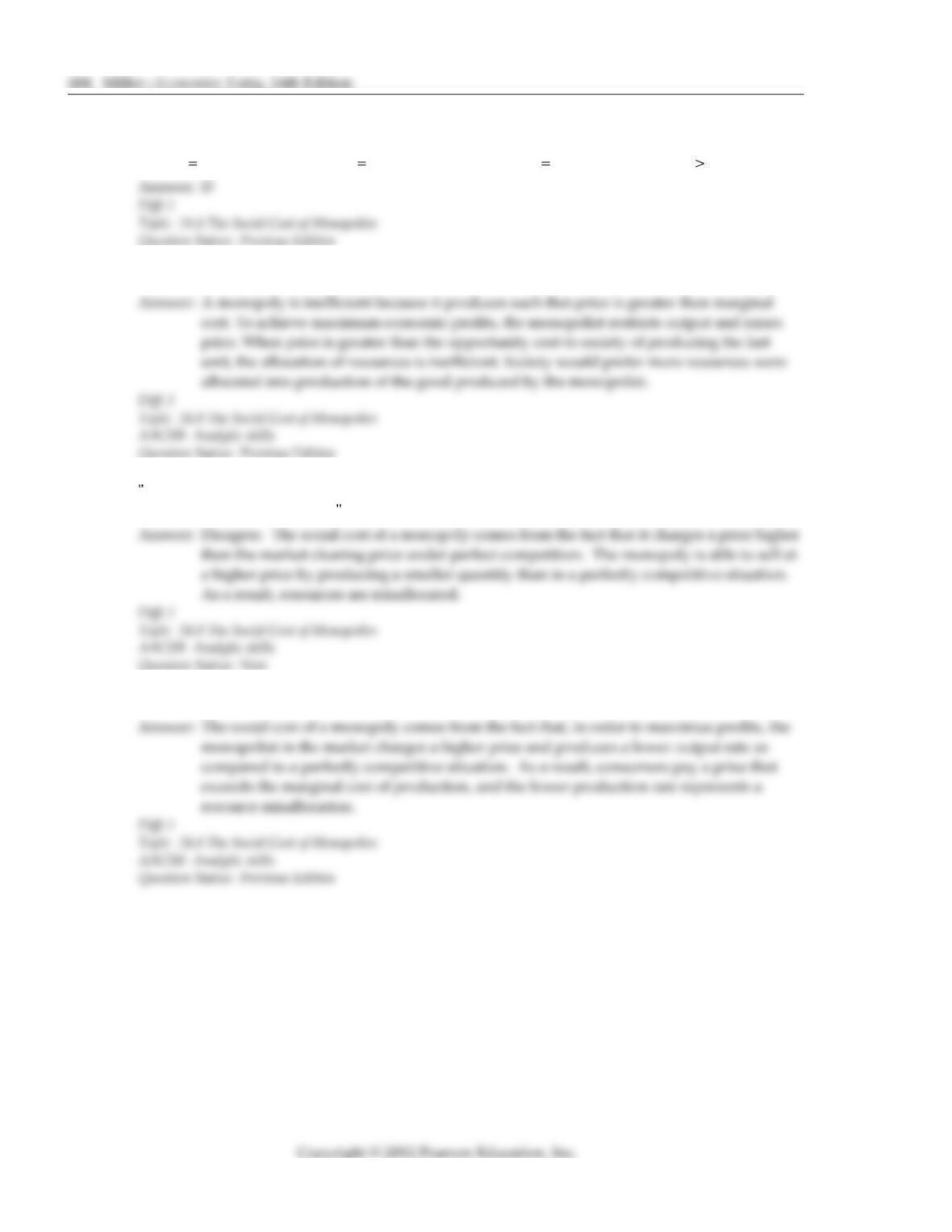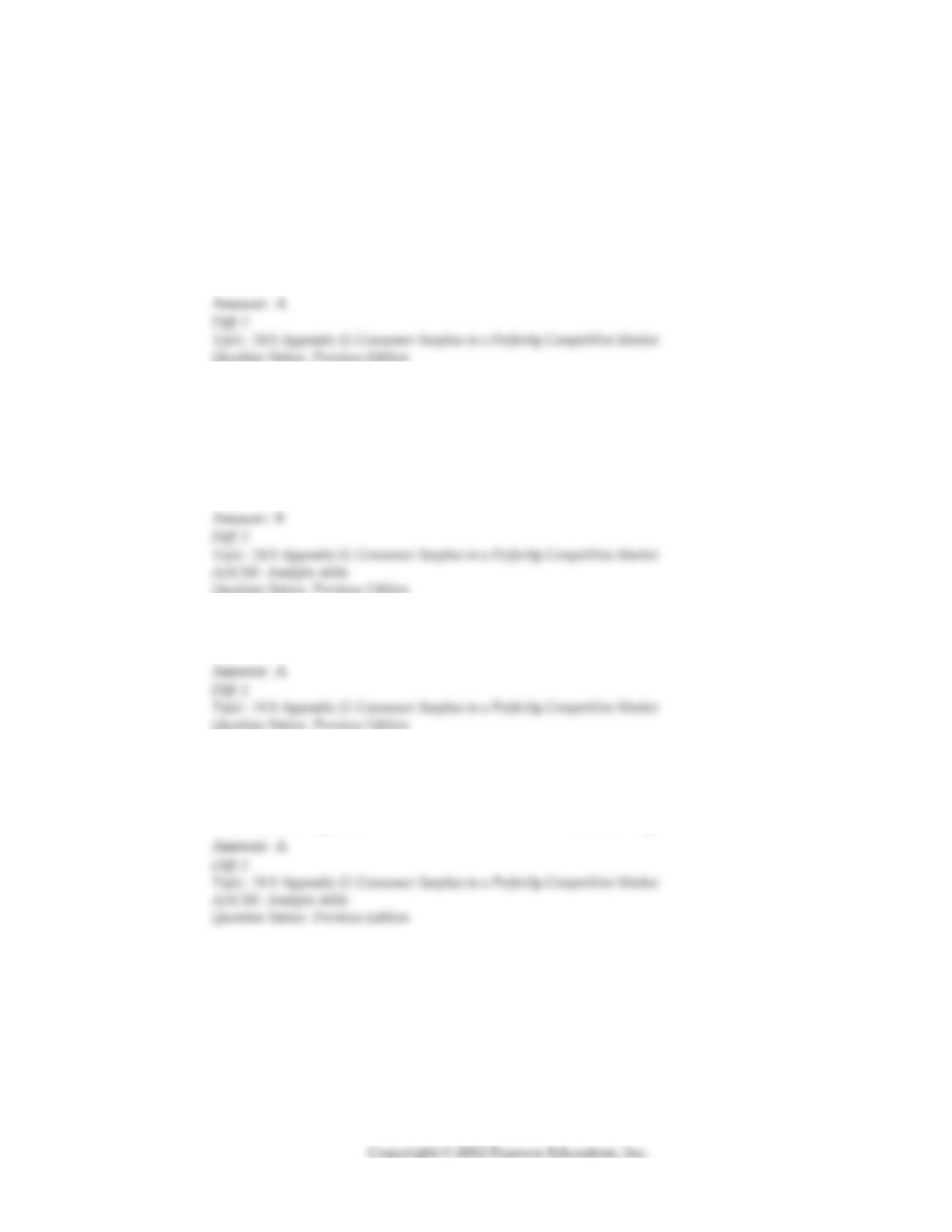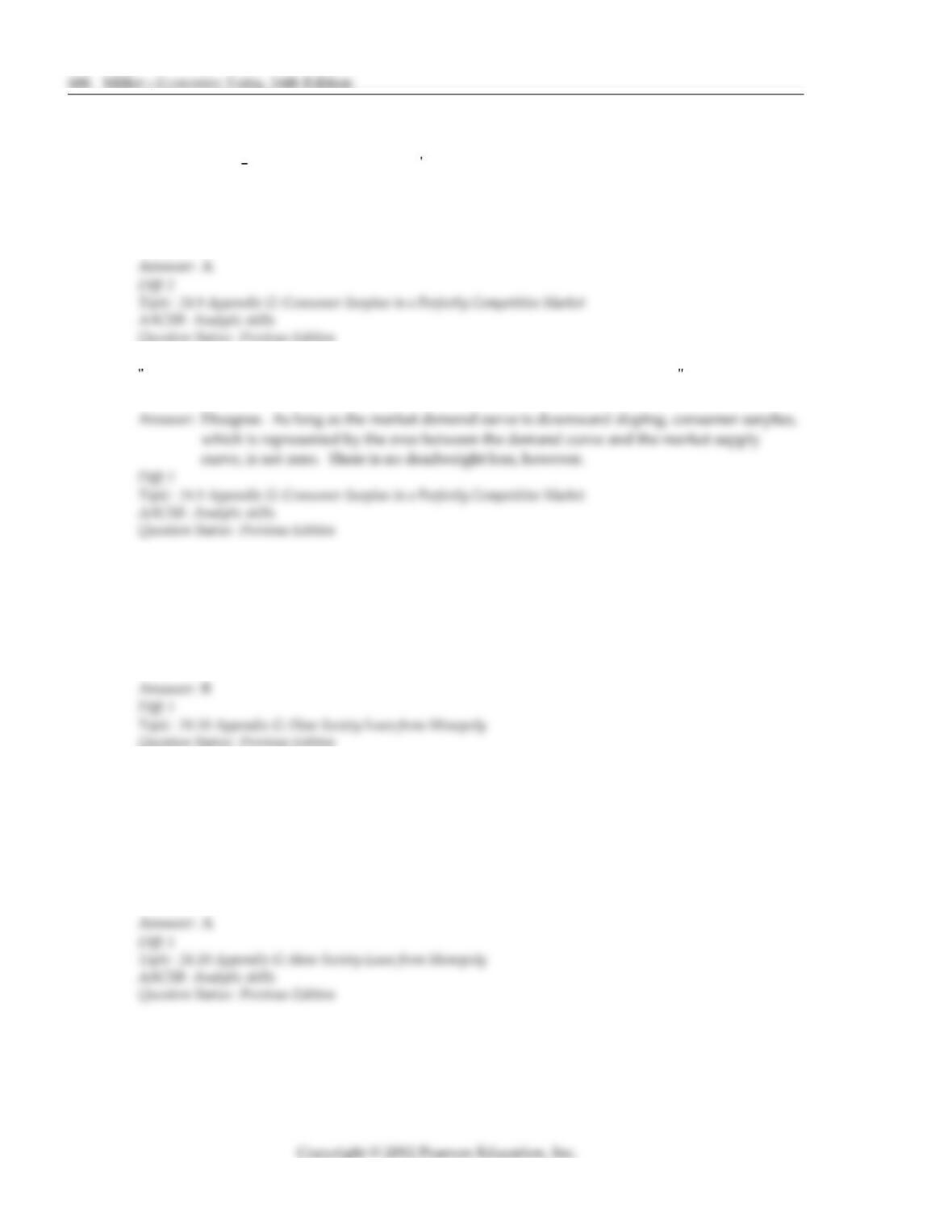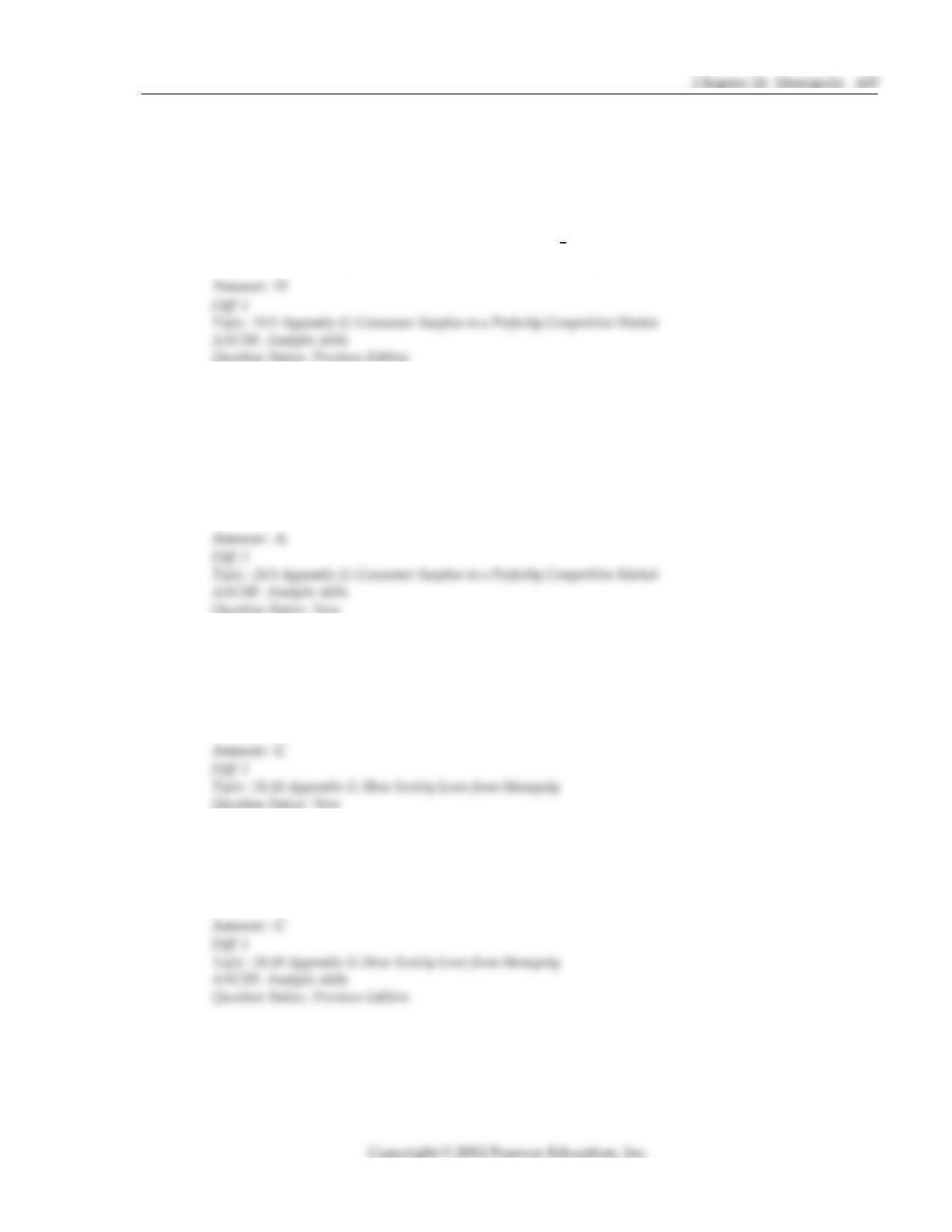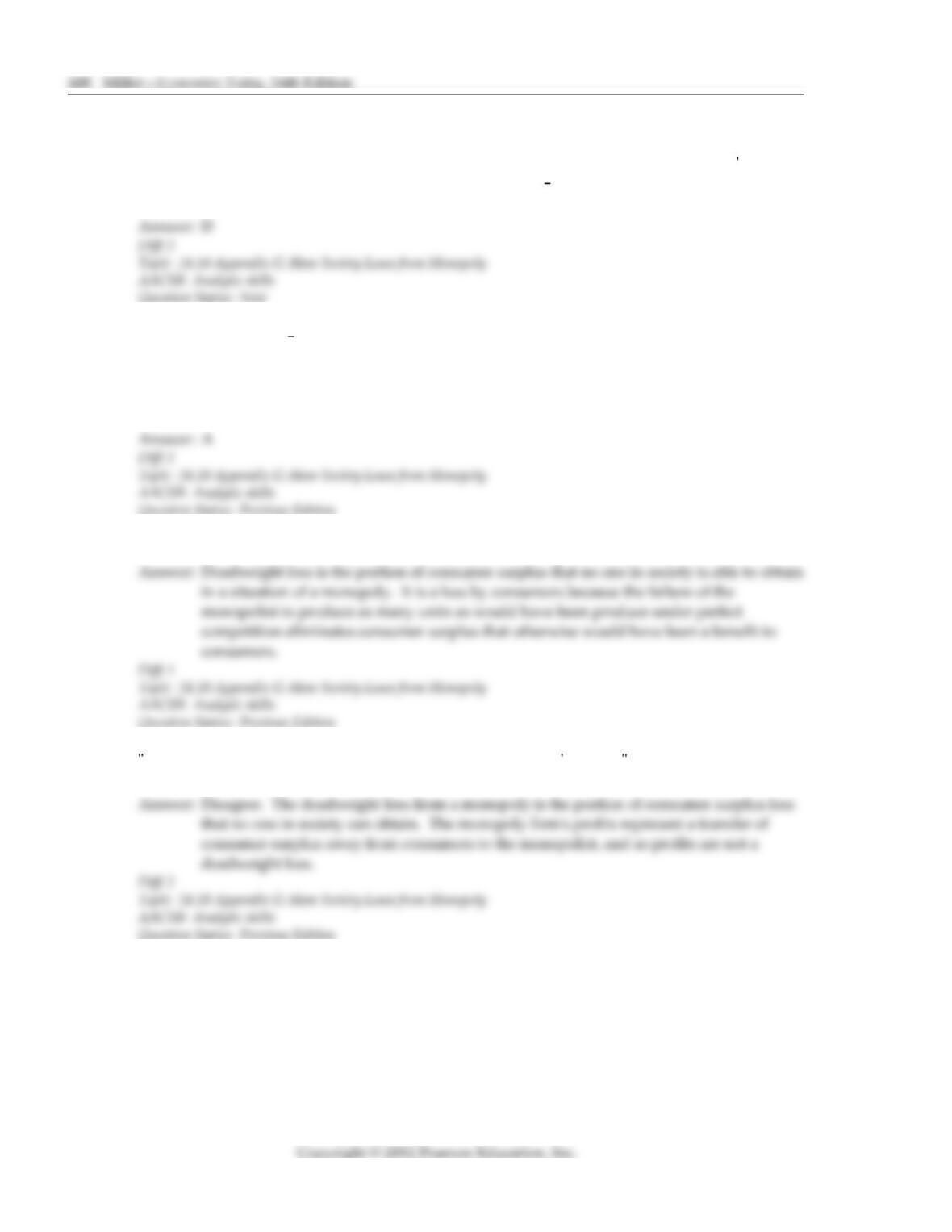10) Which of the following statements is FALSE?
A) Other things being equal, society s overall well
eing is reduced when a perfectly
competitive industry is monopolized.
B) When both a perfectly competitive industry and a monopolist face the same production
costs and the same market demand curve,the monopolist offers a lower level of output for
sale.
C) The profit maximizing monopolist will always produce only along the inelastic portion of
the demand curve, whereas equilibrium in a perfectly competitive industry always occurs
along the elastic portion of the demand curve.
D) When both a perfectly competitive industry and a monopolist face the same production
costs and the same market demand curve, the monopolist charges a higher price for its
product than what would be charged in a perfectly competitive situation.
11) Under a monopoly, resources are misallocated such that
A) too few resources are used in other industries, and too many are used by the monopoly.
B) too few resources are used by the monopoly, and too many are used elsewhere.
C) resources are being used as efficiently as possible only by the monopoly.
D) consumers are being forced to pay a price below the MC of the monopolist.
12) Conclusions about the misallocation of resources under conditions of monopoly depend, in part,
on the crucial assumption that
A) monopolies are interested in economic profits and competitive firms are not.
B) the monopolization of a perfectly competitive industry does not change the cost structure
of the industry.
C) the economies of scale exist only in perfectly competitive industries.
D) the marginal cost curve of a monopolist is different from that of a perfectly competitive
firm.

